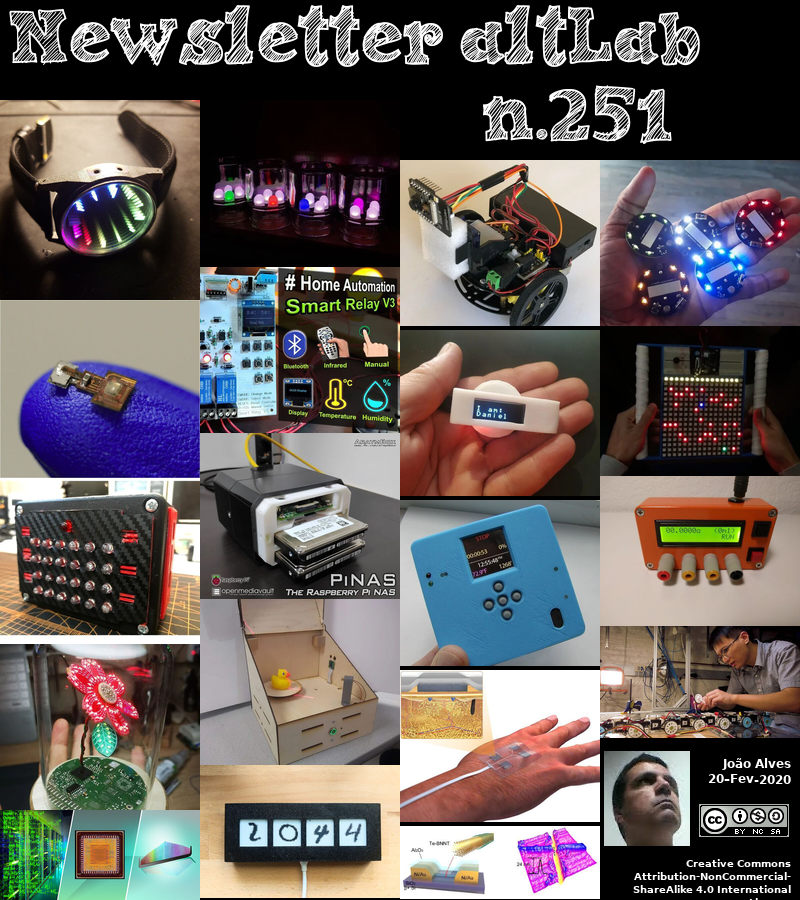2020-02-20 - Nº 251
Editorial
Esta é a Newsletter Nº 251 que se apresenta com o mesmo formato que as anteriores. Se gostar da Newsletter partilhe-a!
Todas as Newsletters encontram-se indexadas no link.
Esta Newsletter tem os seguintes tópicos:
Faz hoje anos que nascia, em 1844, o físico austríaco Ludwig Boltzmann. Foi o fundador da mecânica estatística. As suas teorias interligavam as propriedades e o comportamento de átomos e moléculas com as propriedades e o comportamento em larga escala das substâncias das quais eles eram os blocos constituintes. Ele também elaborou uma teoria cinética dos gases e a lei de Stefan-Boltzmann relativa a uma relação entre a temperatura dum corpo e a radiação que ele emite.
Também faz anos hoje que nascia, em 1931, o matemático norte-americano John Milnor. Recebeu a medalha Fields em 1962 por ter provado que uma esfera de 7 dimensões pode ter 28 estruturas diferenciais diferentes. Este trabalho abriu o novo campo de topologia diferencial. O teorema de Milnor mostra que a curvatura total de um nó é de pelo menos 4. Na década de 1950, Milnor fez uma quantidade substancial de trabalho em topologia algébrica, na qual construiu o espaço de classificação de um grupo topológico e deu uma realização geométrica de uma semi-simplicidade. complexo.
Por fim, faz anos hoje que nascia, em 1945, o astrofísico norte-americano George Smoot. Ele estudou o fundo cósmico de micro-ondas e descobriu a assinatura das ondas gravitacionais. Estas ondulações no espaço-tempo foram preditas pela primeira vez por Albert Einstein. Eles vêm dos primeiros momentos do cosmos e fornecem a primeira evidência directa da expansão após a criação do universo pelo Big Bang. Smoot liderou uma equipa de investigação para mapear os estágios iniciais do cosmos, descobrindo um padrão de variações minúsculas de temperatura que evoluíram para o universo agora formado. Ele partilhou o Prémio Nobel de Física de 2006 com John C. Mather "pela descoberta da forma do corpo negro e pela anisotropia da radiação cósmica de fundo em micro-ondas".
Nesta semana que passou ficámos a saber que a SpaceX lançou mais um conjunto de 60 satélites para o espaço. Estes fazem parte da rede de satélites de comunicação Starlink. Infelizmente após o lançamento bem-sucedido, o primeiro estágio do foguetão não conseguiu pousar no drone Ship "Of Course I Still Love You" no Oceano Atlântico. Se tivesse sido bem sucedido, teria sido um marco importante para a empresa: 50 recuperações de foguetões. Esta missão da Starlink foi o 80º lançamento da SpaceX.
Também esta semana o veículo lunar Yutu-2 da China descobriu o que parecem ser rochas relativamente jovens durante suas recentes actividades de exploração no lado oposto da lua. O veículo espacial da missão Chang'e-4 fotografou as rochas espalhadas, aparentemente de cor mais clara. Os espécimes, que são bem diferentes daqueles já estudados pelo veículo espacial, poderiam completar as ideias da equipa sobre a história geológica e a evolução da área, chamada cratera Von Kármán.
Na Newsletter desta semana apresentamos diversos projetos de maker. É apresentada a revista Hackspace Magazine Nº28 do mês de Março.
 João Alves ([email protected])
João Alves ([email protected])
O conteúdo da Newsletter encontra-se sob a licença  Creative Commons Attribution-NonCommercial-ShareAlike 4.0 International License.
Creative Commons Attribution-NonCommercial-ShareAlike 4.0 International License.
Novidades da Semana

SpaceX launches 60 Starlink satellites for new megaconstellation, misses rocket landing
"SpaceX successfully launched another batch of 60 Starlink satellites into orbit Monday (Feb. 17), but missed a milestone rocket landing on what was the company's fourth flight of the year. Smoked billowed and flames erupted as the sooty Falcon 9 roared to life at 10:05 a.m. EST (1505 GMT), lifting off from Space Launch Complex 40 at Cape Canaveral Air Force Station here in Florida. The launch went off without a hitch following a 24-hour delay due to an issue with a valve component on the rocket's second stage. It was a foggy morning on the space coast, but the fog cleared just before liftoff and the Falcon 9's nine Merlin 1D engines lit up the morning sky as the rocket climbed towards orbit. The satellites rode into space atop a veteran Falcon 9 first stage, marking the fourth time the company has flown a booster four times. The booster, dubbed B1056.4 by SpaceX, previously launched two commercial resupply missions (CRS-17 in May 2019 and CRS-18 that July) followed by the massive telecommunications satellite JCSAT-18/Kacific1 in December." [...]
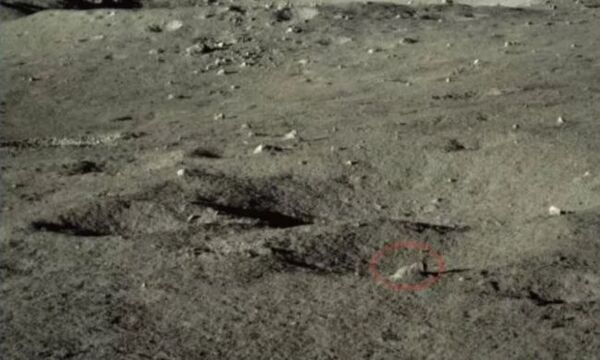
What's up with that rock? China's moon rover finds something strange on the far side
"China's Yutu-2 lunar rover has discovered what appear to be relatively young rocks during its recent exploration activities on the lunar far side. The Chang'e-4 mission's rover imaged the scattered, apparently lighter-colored rocks during lunar day 13 of the mission, in December 2019, according to the Chinese-language 'Our Space' science outreach blog. The specimens, which are quite different from those already studied by the rover, could round out the team's insights into the geologic history and evolution of the area, called Von Kármán crater. Closer inspection of the rocks by the rover team revealed little erosion, which on the moon is caused by micrometeorites and the huge changes in temperature across long lunar days and nights. That anomaly suggests that the fragments are relatively young. Over time, rocks tend to erode into soils." [...]
Outras Notícias

Samsung Electronics Begins Mass Production at New EUV Manufacturing Line
"Samsung Electronics, a world leader in advanced semiconductor technology, today announced that its new cutting-edge semiconductor fabrication line in Hwaseong, Korea, has begun mass production. The facility, V1, is Samsung’s first semiconductor production line dedicated to the extreme ultraviolet (EUV) lithography technology and produces chips using process node of 7 nanometer (nm) and below. The V1 line broke ground in February 2018, and began test wafer production in the second half of 2019. Its first products will be delivered to customers in the first quarter. “Along with technology leadership and design infrastructure, manufacturing excellence is one of the most important elements of the foundry business,” said Dr. ES Jung, President and Head of Foundry Business at Samsung Electronics. “As we ramp up production, the V1 line will enhance our ability to respond to market demand and expand opportunities to support our customers.” The V1 line is currently producing state-of-the-art mobile chips with 7 and 6nm process technology and will continue to adopt finer circuitry up to the 3nm process node." [...]
Dialog Semiconductor to Acquire Adesto Technologies, Broadening Presence in the Industrial Internet of Things Market (IIoT)
"Dialog Semiconductor plc (XETRA:DLG), a leading provider of power management, charging, AC/DC power conversion, Wi-Fi and Bluetooth® low energy technology, and Adesto Technologies Corporation (“Adesto”) (NASDAQ:IOTS), a leading provider of innovative custom integrated circuits (ICs) and embedded systems for the Industrial Internet of Things (IIoT) market, today announced they have signed a definitive agreement for Dialog to acquire all outstanding shares of Adesto. Adesto accelerates Dialog’s expansion into the growing IIoT market that enables smart buildings and industrial automation (Industry 4.0), seamlessly driving cloud connectivity. Headquartered in Santa Clara, California, Adesto has approximately 270 employees and an established portfolio of industrial solutions for smart building automation that fully complements Dialog’s manufacturing automation products. Adesto’s solutions are sold across the industrial, consumer, medical, and communications markets. “This acquisition substantially enhances our position in the Industrial IoT market,” said Jalal Bagherli, CEO of Dialog. “Adesto’s established strength in connectivity solutions and highly optimized products for building and industrial automation perfectly complements and adds scale to our Industrial IoT portfolio from the recently acquired Creative Chips." [...]

Virgin Galactic Welcomes SpaceShipTwo Unity to Spaceport America, New Mexico
"Virgin Galactic has successfully completed another vital step on its path to commercial service, relocating SpaceShipTwo, VSS Unity, to its commercial headquarters at Spaceport America’s Gateway to Space building. VSS Unity, attached to the carrier aircraft, VMS Eve, made the journey from Mojave, California, where the Company’s manufacturing facilities are based. The vehicle landed at 15:49MT, where it was greeted by an enthusiastic group of teammates who will operate the spaceship in New Mexico. This captive carry flight provided an opportunity for engineers to evaluate VSS Unity for over three hours at high altitude and cold temperatures, a longer period of time than is experienced during missions to space. These environmental evaluations of system performance are difficult to replicate at ground level, making captive carry missions a vital component of VSS Unity’s flight test plan. The flight also provided a valuable opportunity to conduct pilot training and familiarization, with veteran Italian Air Force Test Pilot Nicola ‘Stick’ Pecile joining Chief Pilot Dave ‘Mac’ Mackay in the cockpit of the spaceship for the first time." [...]
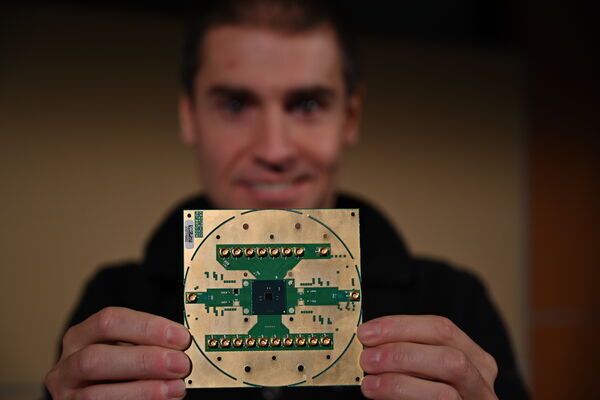
Intel and QuTech Unveil Details of First Cryogenic Quantum Computing Control Chip, ‘Horse Ridge’
"Intel Labs, in collaboration with QuTech ‑ a partnership between TU Delft and TNO (Netherlands Organization for Applied Scientific Research) ‑ outlines key technical features of its new cryogenic quantum control chip “Horse Ridge” in a research paper released at the 2020 International Solid-State Circuits Conference (ISSCC) in San Francisco. The paper unveils key technical capabilities of Horse Ridge that address fundamental challenges in building a quantum system powerful enough to demonstrate quantum practicality: scalability, flexibility and fidelity. “Today, quantum researchers work with just a small number of qubits, using smaller, custom-designed systems surrounded by complex control and interconnect mechanisms. Intel’s Horse Ridge greatly minimizes this complexity. By systematically working to scale to thousands of qubits required for quantum practicality, we’re continuing to make steady progress toward making commercially viable quantum computing a reality in our future.” –Jim Clarke, director of quantum hardware, Intel Labs Why It’s Important: The quantum research community is at mile one of a marathon toward demonstrating quantum practicality. Applying quantum computing to practical problems hinges on the ability to scale to, and control, thousands of qubits at the same time with high levels of fidelity." [...]
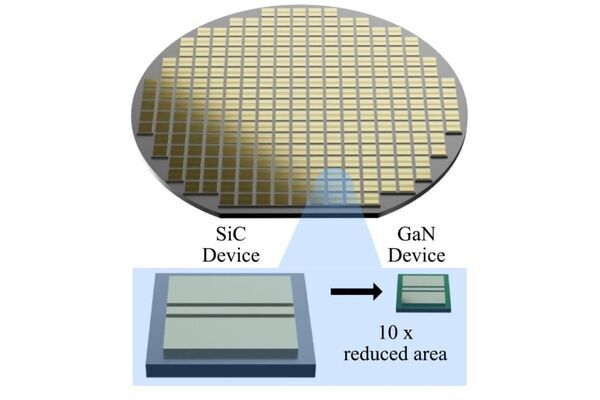
STMicroelectronics and TSMC Collaborate to Accelerate Market Adoption of Gallium Nitride-Based Products
"STMicroelectronics (NYSE:STM), a global semiconductor leader serving customers across the spectrum of electronics applications, and TSMC (TWSE:2330, NYSE: TSM), the world’s largest dedicated semiconductor foundry, are collaborating to accelerate the development of Gallium Nitride (GaN) process technology and the supply of both discrete and integrated GaN devices to market. Through this collaboration, ST’s innovative and strategic GaN products will be manufactured using TSMC’s leading GaN process technology. GaN is a wide bandgap semiconductor material which offers significant benefits over traditional Silicon-based semiconductors for power applications. These benefits include greater energy efficiency at higher power, leading to a substantial reduction in parasitic power losses. GaN technology also allows the design of more compact devices for better form factors. Additionally, GaN-based devices switch at speeds as much as 10X faster than Silicon-based devices while operating at higher peak temperatures." [...]
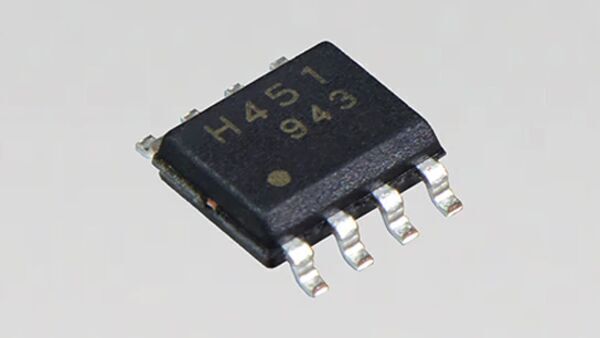
Toshiba Adds New Low Power Consumption Brushed DC Motor Driver IC
"Toshiba Electronic Devices & Storage Corporation (“Toshiba”) has added "TB67H451FNG" to its lineup of low power consumption brushed DC motor driver ICs in the popular pin-assignment HSOP8 package. The new IC features automatic return after over current detection. Mass production shipments start today. The new IC can drive brushed DC motors with a wide range of power supply, from 4.5V to 44V. The numerous applications it supports include mobile devices and devices with 5V USB power supply, and industrial devices, home appliances, printers, and banking terminals that require a high power drive of up to 3.5A[1]. Over current detection is a safety function that prevents damage to the IC by turning off output when the output current exceeds the threshold level due to an overload or other reason." [...]
Ciência e Tecnologia
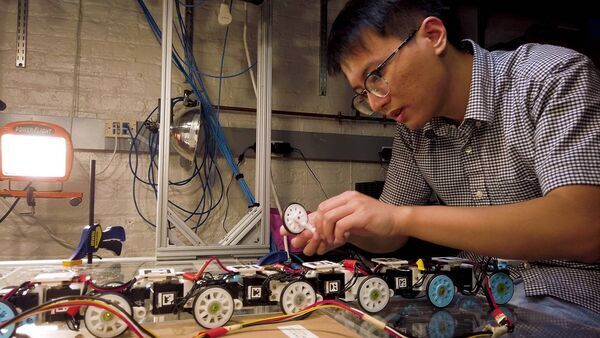
By Studying Snakes, Engineers Learn How To Build Better Robots
"Johns Hopkins mechanical engineers design a snake robot based on the climbing technique of the kingsnake that could help advance search-and-rescue technology Snakes live in diverse environments ranging from unbearably hot deserts to lush tropical forests. But regardless of their habitat, they are able to slither up trees, rocks, and shrubbery with ease. By studying how the creatures move, a team of Johns Hopkins engineers have created a snake robot that can nimbly and stably climb large steps. The team's new findings, published in Journal of Experimental Biology and Royal Society Open Science, could advance the creation of search and rescue robots that can successfully navigate treacherous terrain. "We look to these creepy creatures for movement inspiration because they're already so adept at stably scaling obstacles in their day-to-day lives," says Chen Li, an assistant professor of mechanical engineering at Johns Hopkins University and the papers' senior author. "Hopefully our robot can learn how to bob and weave across surfaces just like snakes."" [...]
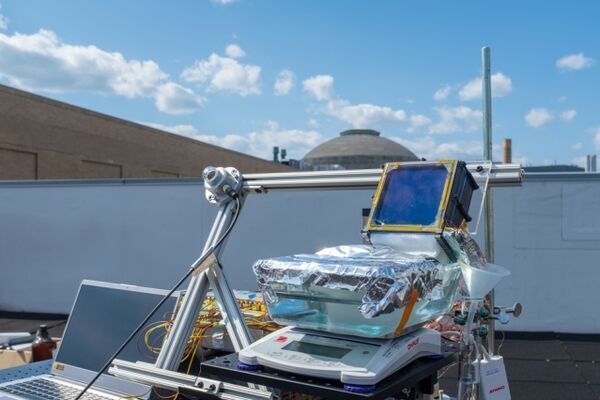
Simple, solar-powered water desalination
"System achieves new level of efficiency in harnessing sunlight to make fresh potable water from seawater. A completely passive solar-powered desalination system developed by researchers at MIT and in China could provide more than 1.5 gallons of fresh drinking water per hour for every square meter of solar collecting area. Such systems could potentially serve off-grid arid coastal areas to provide an efficient, low-cost water source. The system uses multiple layers of flat solar evaporators and condensers, lined up in a vertical array and topped with transparent aerogel insulation. It is described in a paper appearing today in the journal Energy and Environmental Science, authored by MIT doctoral students Lenan Zhang and Lin Zhao, postdoc Zhenyuan Xu, professor of mechanical engineering and department head Evelyn Wang, and eight others at MIT and at Shanghai Jiao Tong University in China. The key to the system’s efficiency lies in the way it uses each of the multiple stages to desalinate the water." [...]

Mathematicians crack Newton’s three-body problem
"For three and a half centuries, the three-body-problem has given mathematicians headaches. Now, a new study is bringing us one step closer to solving it. In 1666, Isaac Newton laid out his three laws of motion, still recited by physics students around the world: An object will remain in a state of inertia unless acted upon by force. The relationship between acceleration and applied force is F=ma (force equals mass times acceleration). For every action there is an equal and opposite reaction. These simple yet elegant assertions worked wonderfully to describe the basic physics of how things interact in the universe." [...]
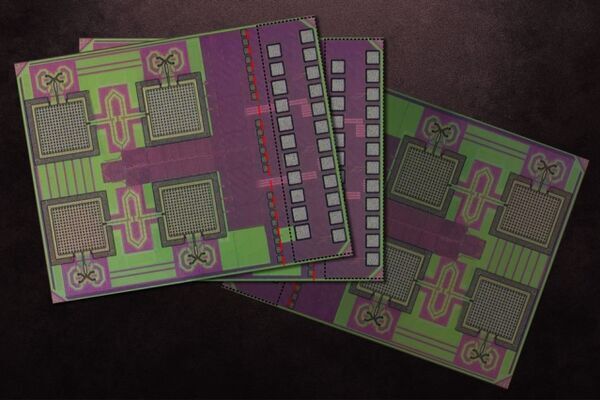
Cryptographic “tag of everything” could protect the supply chain
"Tiny, battery-free ID chip can authenticate nearly any product to help combat losses to counterfeiting. To combat supply chain counterfeiting, which can cost companies billions of dollars annually, MIT researchers have invented a cryptographic ID tag that’s small enough to fit on virtually any product and verify its authenticity. A 2018 report from the Organization for Economic Co-operation and Development estimates about $2 trillion worth of counterfeit goods will be sold worldwide in 2020. That’s bad news for consumers and companies that order parts from different sources worldwide to build products. Counterfeiters tend to use complex routes that include many checkpoints, making it challenging to verifying their origins and authenticity. Consequently, companies can end up with imitation parts." [...]
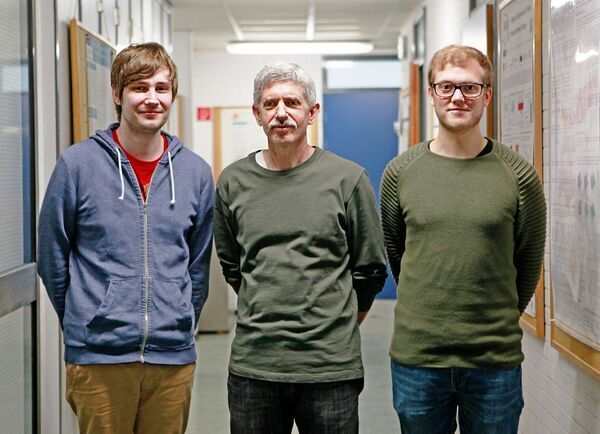
10,000 times faster calculations of many-body quantum dynamics possible
"Physicists from Kiel University have developed an extremely fast simulation technique to predict the time evolution of interacting electrons How an electron behaves in an atom, or how it moves in a solid, can be predicted precisely with the equations of quantum mechanics. These theoretical calculations agree fully with the results obtained from experiments. But complex quantum systems, which contain many electrons or elementary particles - such as molecules, solids or atomic nuclei - can currently not be described exactly, even with the most powerful computers available today. The underlying mathematical equations are too complex, and the computational requirements are too large. A team led by Professor Michael Bonitz from the Institute of Theoretical Physics and Astrophysics at Kiel University (CAU) has now succeeded in developing a simulation method, which enables quantum mechanical calculations up to around 10,000 times faster than previously possible. They have published their findings in the current issue of the renowned scientific journal Physical Review Letters." [...]
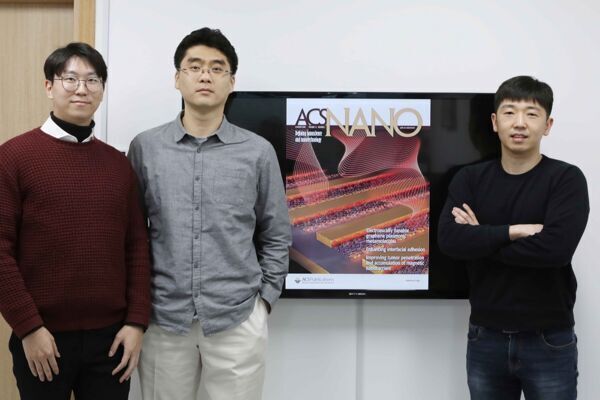
New Graphene-Based Metasurface Capable of Independent Amplitude and Phase Control of Light
"Researchers described a new strategy of designing metamolecules that incorporates two independently controllable subwavelength meta-atoms. This two-parametric control of the metamolecule secures the complete control of both amplitude and the phase of light. A KAIST research team in collaboration with the University of Wisconsin-Madison theoretically suggested a graphene-based active metasurface capable of independent amplitude and phase control of mid-infrared light. This research gives a new insight into modulating the mid-infrared wavefront with high resolution by solving the problem of the independent control of light amplitude and phase, which has remained a long-standing challenge. Light modulation technology is essential for developing future optical devices such as holography, high-resolution imaging, and optical communication systems. Liquid crystals and a microelectromechanical system (MEMS) have previously been utilized to modulate light." [...]
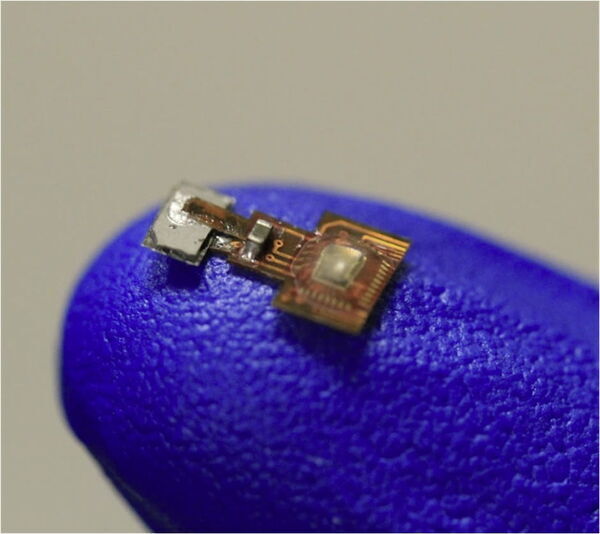
Magnet-controlled bioelectronic implant could relieve pain
"Rice engineer’s MagNI can be wirelessly charged and programmed with magnetic fields A team of Rice University engineers has introduced the first neural implant that can be both programmed and charged remotely with a magnetic field. Their breakthrough may make possible imbedded devices like a spinal cord-stimulating unit with a battery-powered magnetic transmitter on a wearable belt. The integrated microsystem, called MagNI (for magnetoelectric neural implant), incorporates magnetoelectric transducers. These allow the chip to harvest power from an alternating magnetic field outside the body. The system was developed by Kaiyuan Yang, an assistant professor of electrical and computer engineering; Jacob Robinson, an associate professor of electrical and computer engineering and bioengineering; and co-lead authors Zhanghao Yu, a graduate student, and graduate student Joshua Chen, all at Rice’s Brown School of Engineering. Yang introduced the project today at the International Solid-State Circuits Conference in San Francisco." [...]

Climate change will disrupt existing energy systems
"As climate changes and extreme weather events become more commonplace, we will need to fundamentally rethink how we produce renewable energy. Researchers at EPFL have developed a simulation method to reduce the adverse influences due to climate-related uncertainties in the energy sector and guarantee robust operation of energy infrastructure during extreme climate events. Severe droughts and storms, bitter cold, intense sunlight and thicker cloud cover might sound like the stuff of science fiction. But like it or not, this is the future that awaits us as climate change takes hold. Just half a century from now, these extreme conditions will affect energy demand and push our supply systems to their limits. Because today’s renewable energy systems are designed with current weather patterns in mind, they will no longer meet demand for power as our climate evolves." [...]
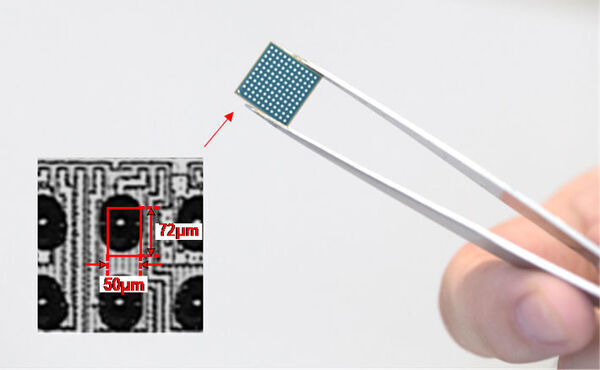
Smallest all-digital circuit opens doors to 5 nm next-gen semiconductor
"Scientists at Tokyo Institute of Technology (Tokyo Tech) and Socionext Inc. have designed the world's smallest all-digital phase-locked loop (PLL). PLLs are critical clocking circuits in virtually all digital applications, and reducing their size and improving their performance is a necessary step to enabling the development of next-generation technologies. New or improved technologies, such as artificial intelligence, 5G cellular communications, and the Internet-of-Things, are expected to bring revolutionary changes in society. But for that to happen, high-performance system-on-a-chip (SoC)—a type of integrated circuit—devices are indispensable. A core building block of SoC devices is the phase-locked loop (PLL), a circuit that synchronizes with the frequency of a reference oscillation and outputs a signal with the same or higher frequency. PLLs generate ‘clocking signals’, whose oscillations act as a metronome that provides a precise timing reference for the harmonious operation of digital devices." [...]
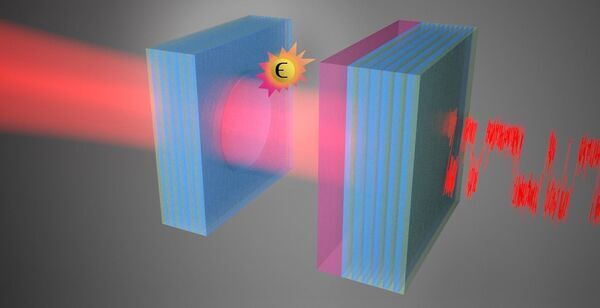
Noise in a sensor? No problem!
"In conventional sensing methods, noise is always a problem, especially in systems that are meant to detect changes in their environment that are hardly bigger or even smaller than the noise in the system. Encountering this problem in his experiments with interacting photons, AMOLF physicist Said Rodriguez thought of a way around it. In an article that will be published in Physical Review Applied on February 13, 2020, he demonstrates how noise can be turned into a resource for optical sensing rather than a problem. “Using noise to improve sensing methods is counterintuitive”, Said Rodriguez admits. “Imagine trying to see the largest letters in a vision test and failing. Then, imagine how a sudden earthquake helps you to see even the smallest letters in the test." [...]
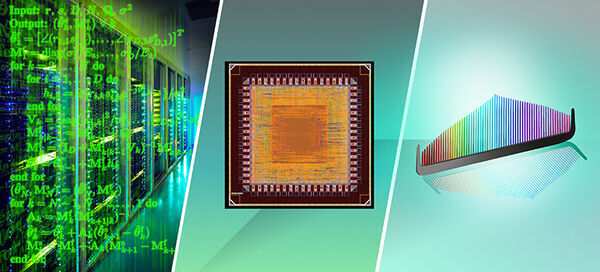
Making the internet more energy efficient
"Researchers at Chalmers recently completed a 5-year research project looking at how to make fibre optic communications systems more energy efficient. Among their proposals are smart, error-correcting data chip circuits, which they refined to be 10 times less energy consumptive. The project has yielded multiple scientific articles, in publications including Nature Communications. Streaming films and music, scrolling through social media, and using cloud-based storage services are everyday activities now. But to accommodate this digital lifestyle, a huge amount of data needs to be transmitted through fibre optic cables – and that amount is increasing at an almost unimaginable rate, consuming an enormous amount of electricity. This is completely unsustainable – at the current rate of increase, if no energy efficiency gains were made, within ten years the internet alone would consume more electricity than is currently generated worldwide." [...]
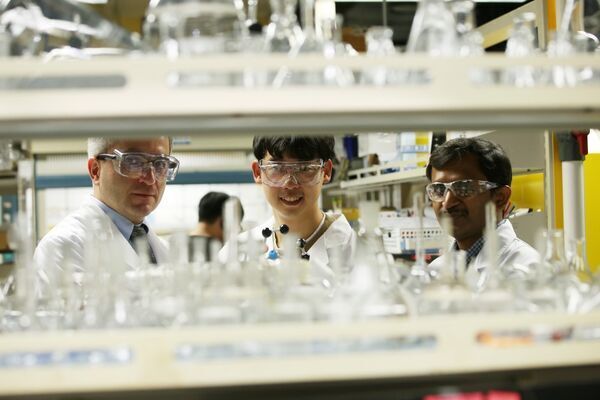
New Catalyst Recycles Greenhouse Gases into Fuel and Hydrogen Gas
"Scientists have taken a major step toward a circular carbon economy by developing a long-lasting, economical catalyst that recycles greenhouse gases into ingredients that can be used in fuel, hydrogen gas, and other chemicals. The results could be revolutionary in the effort to reverse global warming, according to the researchers. The study was published on February 14 in Science. “We set out to develop an effective catalyst that can convert large amounts of the greenhouse gases carbon dioxide and methane without failure,” said Cafer T. Yavuz, paper author and associate professor of chemical and biomolecular engineering and of chemistry at KAIST. The catalyst, made from inexpensive and abundant nickel, magnesium, and molybdenum, initiates and speeds up the rate of reaction that converts carbon dioxide and methane into hydrogen gas. It can work efficiently for more than a month." [...]
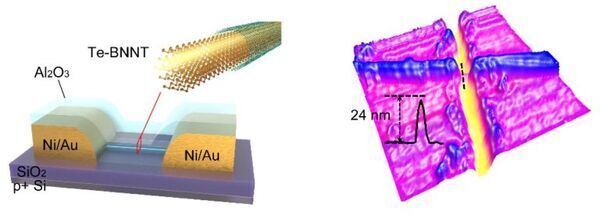
DNA-like material could bring even smaller transistors
"Computer chips use billions of tiny switches, called transistors, to process information. The more transistors on a chip, the faster the computer. A material shaped like a one-dimensional DNA helix might further push the limits on a transistor’s size. The material comes from a rare earth element called tellurium. Researchers found that the material, encapsulated in a nanotube made of boron nitride, helps build a field-effect transistor with a diameter of two nanometers. Transistors on the market are made of bulkier silicon and range between 10 and 20 nanometers in scale." [...]
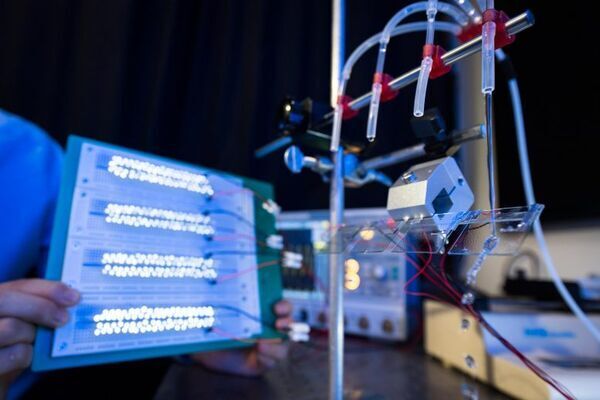
CityU new droplet-based electricity generator: A drop of water lights up 100 small LED bulbs
"A research team led by scientists from City University of Hong Kong (CityU) has recently developed a new form of droplet-based electricity generator (DEG). It features a field-effect transistor (FET)-like structure that allows for high energy-conversion efficiency, and its instantaneous power density is increased by thousands of times compared to its counterparts without FET-like structure. This groundbreaking achievement can help to advance scientific research into water energy generation and tackle the energy crisis. The research was led by Professor Wang Zuankai from CityU's Department of Mechanical Engineering; Professor Zeng Xiaocheng from the University of Nebraska-Lincoln, US; and Professor Wang Zhonglin, Founding Director and Chief Scientist at the Beijing Institute of Nanoenergy and Nanosystems of Chinese Academy of Sciences. Their findings were published in the latest issue of the highly prestigious scientific journal Nature under the title “A droplet-based electricity generator with high instantaneous power density”. A conventional droplet energy generator based on the triboelectric effect can generate electricity induced by contact electrification and electrostatic induction when a droplet hits a surface." [...]
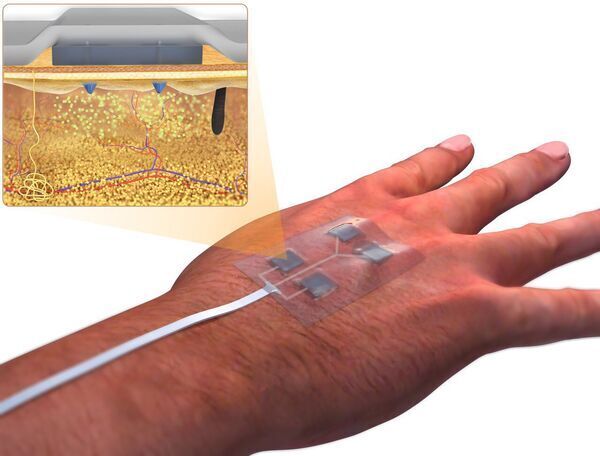
UConn Biomedical Engineer Creates “Smart” Bandages to Heal Chronic Wounds
"Chronic and non-healing wounds—one of the most devastating complications of diabetes and the leading cause of limb amputation—affects millions of Americans each year. Due to the complex nature of these wounds, proper clinical treatment has been limited. For the first time, faculty in the biomedical engineering department—a shared department with the UConn School of Dental Medicine, School of Medicine, and School of Engineering— designed a wirelessly-controlled, or “smart,” bandage and corresponding smartphone-sized platform that can precisely deliver different medications to the wound with independent dosing. This bandage, developed by Dr. Ali Tamayol, associate professor, and researchers from the University of Nebraska-Lincoln and Harvard Medical School, is equipped with miniature needles that can be controlled wirelessly—allowing the drugs to be programmed by care providers without even visiting the patient. “This is an important step in engineering advanced bandages that can facilitate the healing of hard to treat wounds. The bandage does not need to be changed continuously,” says Tamayol." [...]

Chinese researchers realize entanglement of two quantum memories via fibers over 50 km
"A Chinese research team has realized entanglement of two quantum memories via fibers over 50 km, making a breakthrough in the field of quantum communication. Quantum entanglement is a quantum mechanical phenomenon in which the quantum states of two or more objects have to be described with reference to each other, even though the individual objects may be spatially separated. The successful experiment has laid the foundation for the development of a quantum internet that should enable a number of revolutionary applications such as distributed quantum computing. The experiment was jointly conducted by researchers with the University of Science and Technology of China (USTC), Jinan Institute of Quantum Technology, and Shanghai Institute of Microsystem and Information Technology of the Chinese Academy of Sciences. The researchers in the experiment with USTC include Pan Jianwei, often dubbed the "Father of Quantum" in China, Bao Xiaohui, and Zhang Qiang. "Despite enormous progress, at present, the maximal physical separation achieved between two nodes is 1.3 km, and challenges for longer distances remain," the researchers wrote in a paper published Wednesday in the journal Nature." [...]
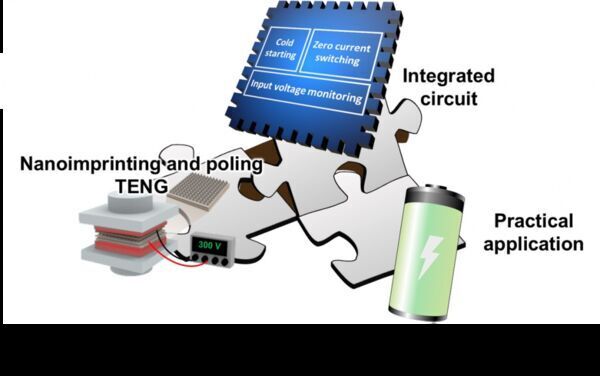
Static Electricity as Strong as Lightening Can Be Saved in a Battery
"Static electricity shock which occurs more often in winter is unpleasant. When two different objects are in repeated contact, it causes friction which then creates static electricity. This can be found easily in our everyday actions and it is very annoying even between the lovers. In fact, there is no electric current flowing in static electricity but tens of thousands of volts occurs, equal to the power of lightening. Then, can we collect static electricity for use? The answer is yes." [...]
Documentação
A documentação é parte essencial do processo de aprendizagem e a Internet além de artigos interessantes de explorar também tem alguma documentação em formato PDF interessante de ler. Todos os links aqui apresentados são para conteúdo disponibilizado livremente pelo editor do livro.
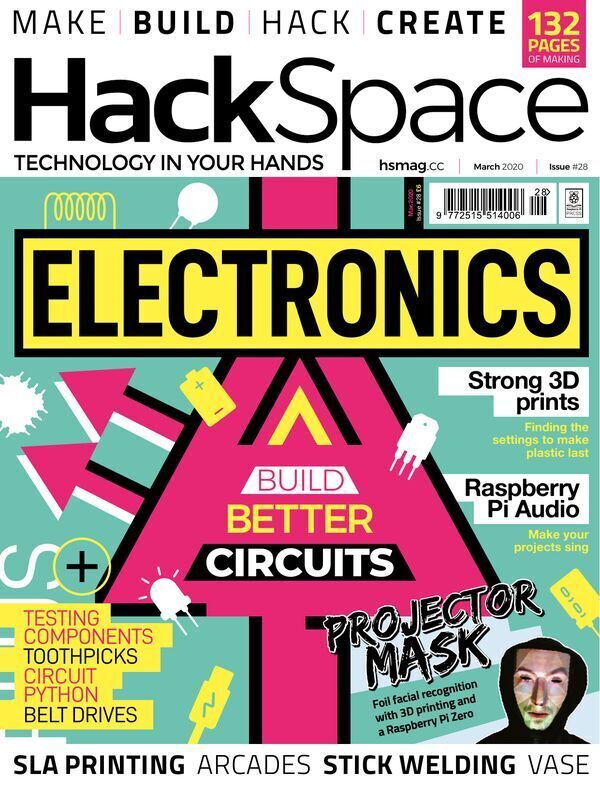
HackSpace magazine #28
"You don’t have to understand electronics to be a maker, but adding a few billion electrons can add light, interactivity, motion, or (some limited) intelligence to the things you make. In this issue we’ll help you get started with electronics and build better circuits. - Design a vase in Fusion 360 - Make things with toothpicks - Add audio to Raspberry Pi projects - 3D print strong parts" [...]
Projetos Maker
Diversos Projetos interessantes.
Neopixel Game Console
"Pixel and play is an interactive game console based on a Neopixels matrix and the Arduino Nano BLE sense This project was born in 'Creative Electronics', a BEng Electronics Engineering 4th year module at the University of Málaga, School of Telecommunications. Pixel and play is an open hardware/software project to make the creation of interactive games easy. This Instructables is a detailed assembly guide of the console. But that's not all the game. We also provide an Arduino library with lots of processing like methods and several game examples and demos and even a processing app for painting images etc. Find all .stl (3d) and Gerber (PCB) files to build your own Pixel and Play console at Open Hardware Github." [...]
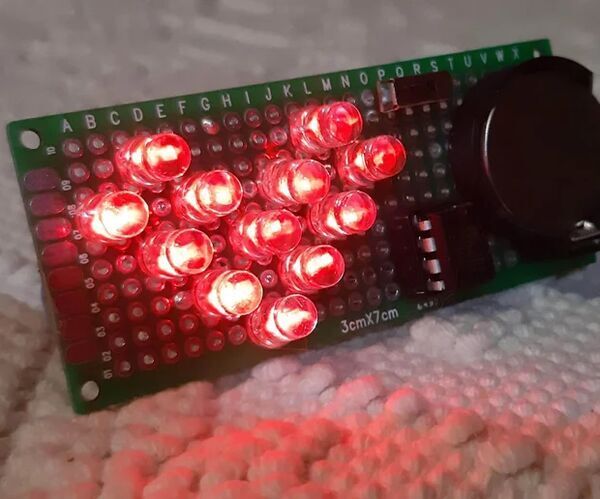
Animated Heart
"Just in time for Valentines day, a small gadget to be given to your sweetheart: a heart that loops through multiple animations. It nicely fits on a desk or table to have your loved one remember you! This animated heart is very compact and simple: just switch it on and the 12 LEDs that form a heart will cycle through a loop of animations that you can fully customize. It runs off a coincell and is based on a very common and cheap microcontroller, the 8-pin ATTINY13, which can be conveniently programmed with an Arduino Uno. Through the special technique of charlieplexing, 12 LEDs can be individually controlled with only 4 output pins. " [...]
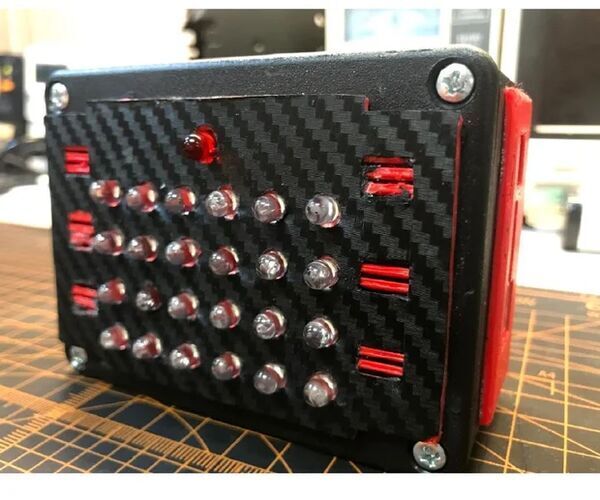
NRF24 Wireless LED Box
"Over the years, I have built and use many communication methods for my robotic projects. No system is perfect, I have work with the EZ-link ( Bluetooth module), XBee, RobotShop PS2 controller, etc. However, my favorite so far is the nRF24 board with its breakout board, for voltage control due to its low cost and all the benefits that come with the board. One of the biggest benefits of the nRF24 is that the board can act as a dual purposes device, where the nRF24 can turn an Arduino to be a transmitter and receiver. What this means is, an Arduino can receiving data and passing it on through a large network. This opens up the possibility of projects due to this is vast and incomprehensive capability is underrated." [...]
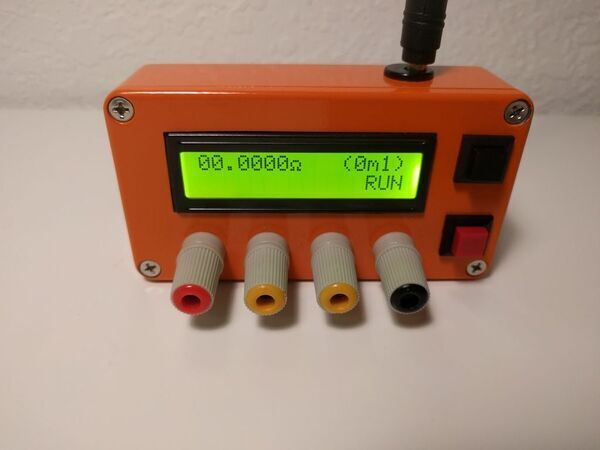
Arduino based Milliohm Meter with LCD display
"A milliohm meter is a device used in determining the resistance of small resistors, PCB traces, motor coils, inductance coils, and transformer coils, or calculate things like the length of wires. It provides a resolution, not built into regular multimeters, making it easy to get accurate readings in the milliohm range. There are quite a number of Miliohmeter builds on the internet, but today’s tutorial will chronicle the efforts of instructable user Danielrp. Daniel’s version of the meter is based on a precision current sink and a high-resolution ADC controlled by an Arduino Nano. The current sink is based on the LT3092 precision current source/sink which, using a network of resistors and transistors is set to function as a sink. For the ADC, the high resolution, MCP3422A0 I2C ADC is used." [...]
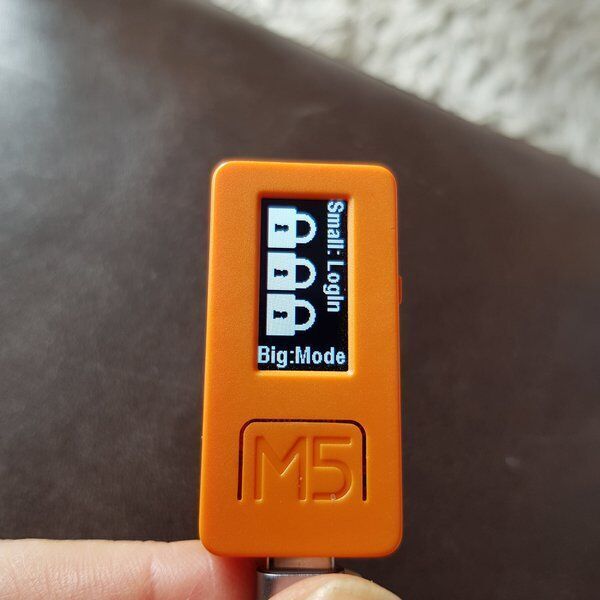
PassStrong
"Stronger password, easy & (almost) secure way The PassStrong BlueTooth Dongle uses a 14$ Esp32 dongle to generate, securely store (with limitations, see hereunder) and types strong passwords. " [...]
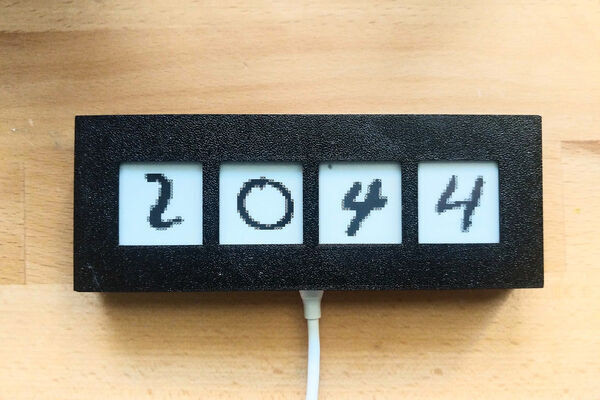
MNIST clock
"A clock that displays using randomly selected MNIST digits. Hardware/software implementation by Dheera Venkatraman Hardware It uses an TinyPICO which is an awesome, compact ESP32 board with plenty of GPIO pins, 4MB flash, Wi-Fi, and lots of other features not needed for this project. 4 e-Ink displays are used for the digits. I chose e-Ink since it matches with the idea of handwritten digits, works well in all lighting conditions, and doesn't light up your bedroom when you're trying to sleep. The Waveshare e-Ink displays are mostly SPI, although they have some annoying extra pins. One would wish they were just SPI + one CS pin for each board, but a few more connections are necessary." [...]
Raspberry Pi Controlled DC Load
"A DC Load is useful for testing lots of different things. If you have a power supply and want to make sure it’s able to deliver its fully designed potential, then you can use a DC Load to test that power supply. If you have batteries and you want to know if they’ll provide their rated capacity, then a DC Load can tell you that. I’ve also used a DC Load for testing USB cables to see which cables perform the best. There’s a lot of possibilities, and it’s a useful piece of test equipment. I’ve built a few DC Loads before, and I even own a commercial unit, a Kunken KP184." [...]
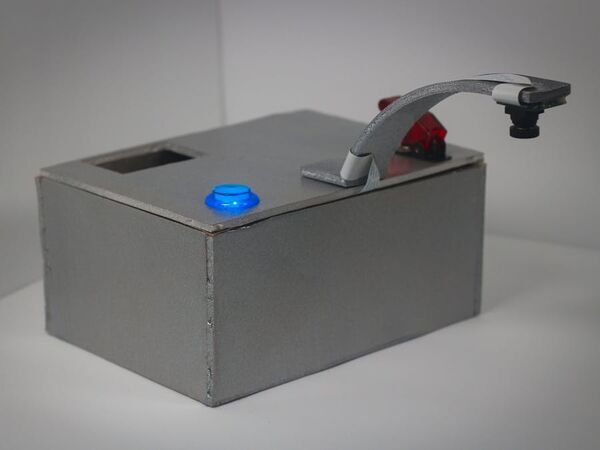
Reading Eye For The Blind With Jetson Nano
"Allows the reading impaired to hear both printed and handwritten text by converting recognized sentences into synthesized speech. The World Health Organization (WHO) estimates that there are 285 million people that are visually impaired. Specifically in the United States, there are 1.3 million who are legally blind and only 10 percent of them can actually read braille and only 10 percent of the blind children are learning it. This is due to how expensive books are to read in braille. It costs up to $15,000 just to convert five chapters of a science book! Due to the price, very few blind people are able to learn through books." [...]
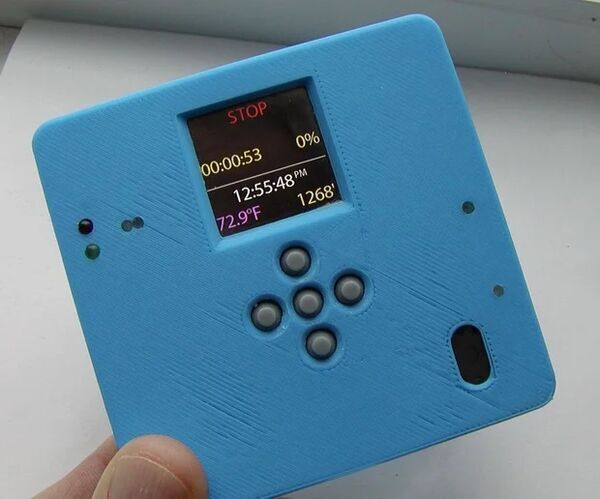
Hiking Data Logger Using RFM69CW
"This hiking data logger is used to record a hike’s location, start and end time, temperature, altitude and barometric pressures. It will also audibly report altitude milestones during the hike. Even if you have no interest in hiking you may find the schematics, hardware and/or software useful. The hiking data logger is made up of three separate devices and their Arduino projects. All of the devices communicate using a HopeRF RFM69CW transceiver. The three devices: Gateway - resides in your pack’s top pouch." [...]
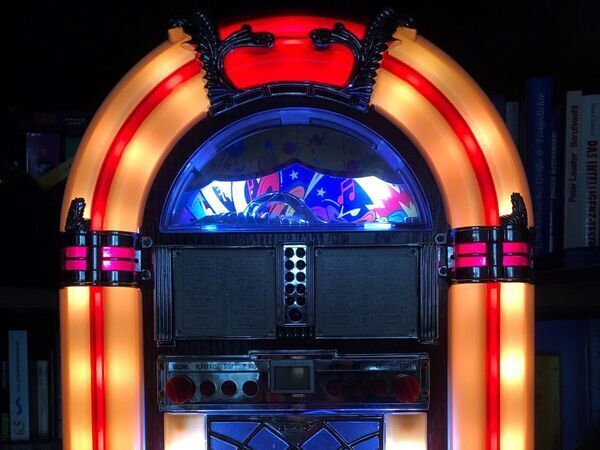
Jukebox
"New sound and light for an old retro desktop jukebox. A few years ago I got a small jukebox with a radio, CD player and some lamps. After only a short time I converted the jukebox to a multimedia PC. But even this one was just standing around most of the time. In January 2020 I discovered the Volumio program for the Raspberry Pi. I installed it on my RPi and was thrilled!" [...]
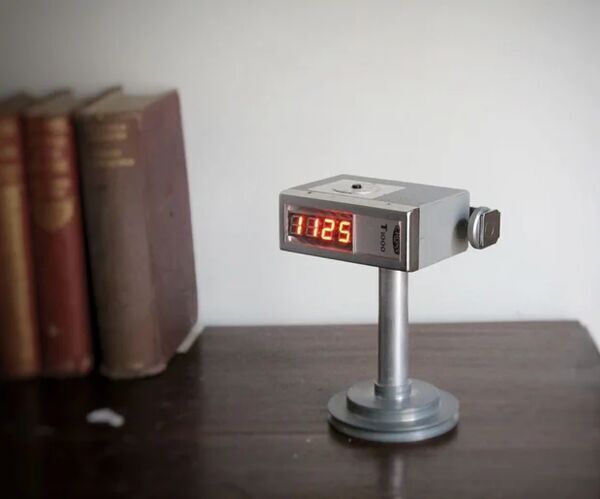
Vintage Flash Clock
"In my searches for interesting things, I sometimes come across vintage camera flashes and find myself always buying them. I have a draw full of old flashes and I have no idea why! I have made lamps out of them (check these ibles here and here) before which is a great way to display them. This time though I decided to make a clock out of one. I found a nice clock module recently on Ali Express and they fit quite well inside an old flash. They even have a temperature reading which is a nice add." [...]
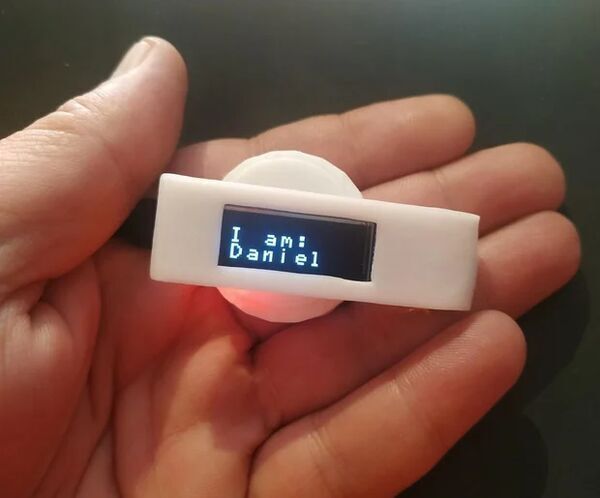
Persona Project
""Persona Project" electronic weareable device tag who can show your name for meetings, commercial presentations or funny messages for events. Can show messages to your friend, customers, waiters, presentations Loop messages 3 type of diferent texts sizes: 4linesx16chars, 2x8 and 1x4 Text with flashes Lightweight You can wear it on your tie, shirt, pocket... Very low power consumption Can be powered with your phone directly, or an external powerbank. Low cost Easy to build Easy mod for other power sources like Lipo battery or twin CR-2032 Supplies: You need this supplies: 3d printer with PLA filament Solder 4 x wires (red, yellow, green, black) 1 x 0.91"OLED Display i2c type OLED 1 x Digispark ATTINY85 Lilypad Nano Lilypad" [...]
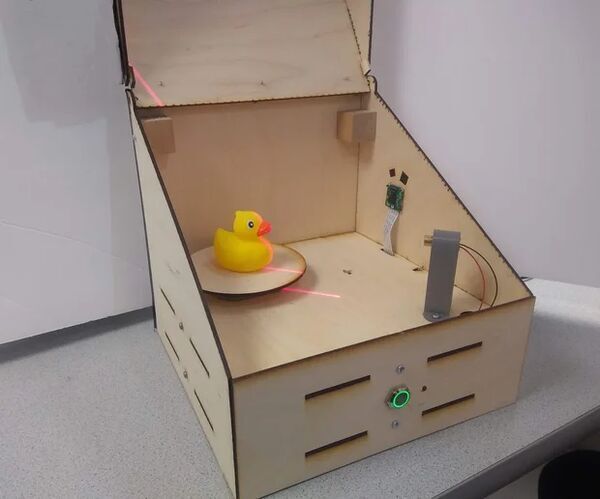
Raspberry Pi Laser Scanner
"The Laser Scanner is a Raspberry Pi embedded system device able to digitize objects into .obj mesh files for reproduction using 3D printing. The device does this by utilizing a line laser and an integrated PiCam to perform computer vision. The laser is positioned 45 degrees askew from the laser and projects a bright red line on one vertical slice of the object. The camera detects the slices distance from the center to give a mesh slice. The object is spun on the rotating tray and the process is repeated until the full object is scanned. The generated .obj file is finally emailed to the user, making the system fully standalone and embedded." [...]
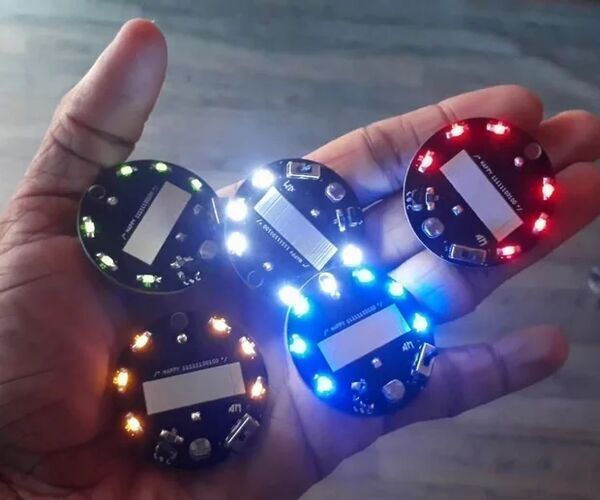
The Light Badge
"The Light Badge is an electronic kit which utilizes an LDR( light dependent resistor) to detect lowering light levels and light a LED once it gets dark.This is a great example of an LDR in action. This PCB can be used as a Wearable device. " [...]
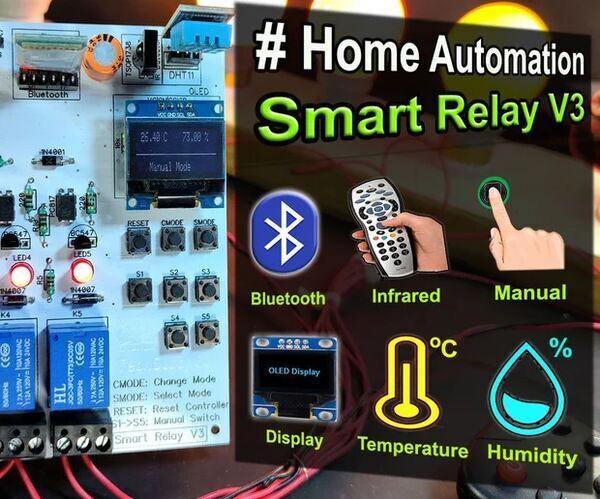
How to Make Smart Home Using Arduino Control Relay Module | Home Automation Ideas
"In this home automation tutorial video, we will design a smart home relay module that can control 5 home appliances. This relay module can be controlled from Mobile or smartphone, IR remote or TV remote, Manual switch. This smart relay also can sense the room temperature and sunlight to turn on and off the fan and light bulb. This smart relay has the following features: 1. Home appliances controlled by mobile Bluetooth 2. Home appliances controlled by TV Remote (Infrared) 3." [...]
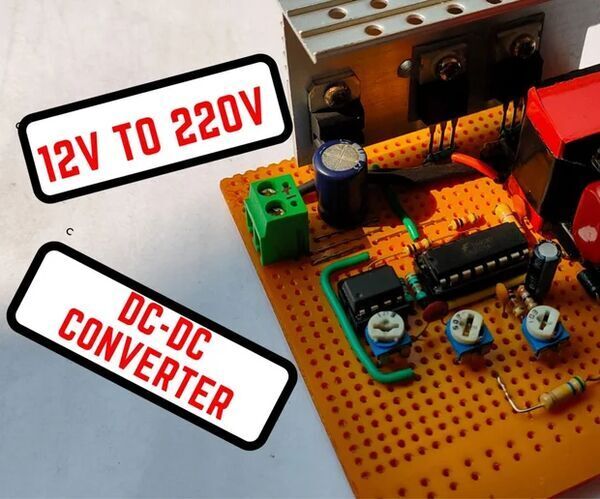
200Watts 12V to 220V DC-DC Converter
"Welcome to this instructable where I will show you how I made this 12volts to 220volts DC-DC converter with feedback to stabilize output voltage and low battery/ under-voltage protection, without using any microcontroller. Even though the output is high voltage DC(and not AC) we can run LED Lamps, Phone Chargers and other SMPS based devices from this unit. This converter cannot run any inductive or transformer based load like AC motor or fan. For this project I will be using the popular SG3525 PWM control IC to step up the DC voltage and provide necessary feedback to control the output voltage. This project uses very simple components and some of them are salvaged from old computer power supplies. Lets get building!" [...]
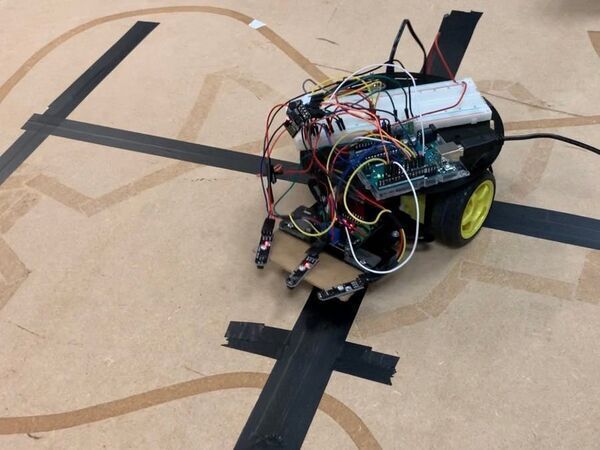
Waiter Robot for Restaurants
"With an ordering system and a database, the robot is designed to automatically deliver dishs to their corresponding tables. In today's modern society automation has become an integral part of our daily life. We are increasingly noticing that more and more mondane tasks are given to robots. For this purpose, we propose to automate the task of waitering tables at a restaurant. More specifically, we will design a robot and an automated solution to ensure that all customers on the same table of a restaurant are served at the same time. To do so, we will design on the one hand a system to automate putting in orders, estimating cooking time and getting instructions from the kitchen to serve each table." [...]
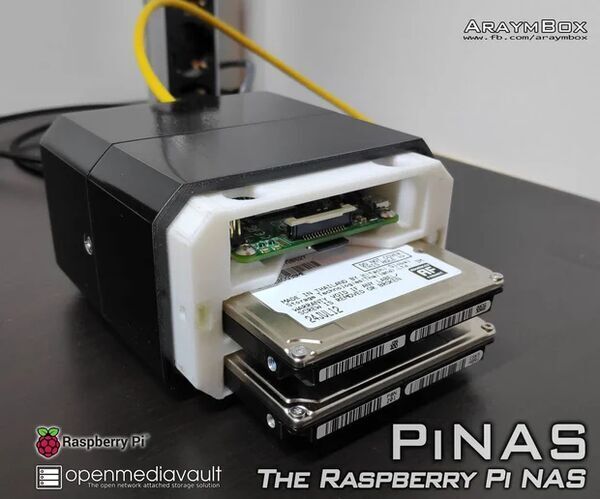
PiNAS - the Raspberry Pi NAS
"This instructable describes the build of a very compact Raspberry Pi powered two bay network attached storage (NAS). Features: - Super small - Easy to build - Simple setup - Cheap - Perfect for learning about network, file system, security mechanisms - Raspberry Pi 2 or 3 can be used (Pi 4 with some tweaks) - Powered by a single USB cable - Can use WiFi - Uses notebook hard drives - hard drives are hotswappable - Two USB ports for further hardware - Easy to open case" [...]
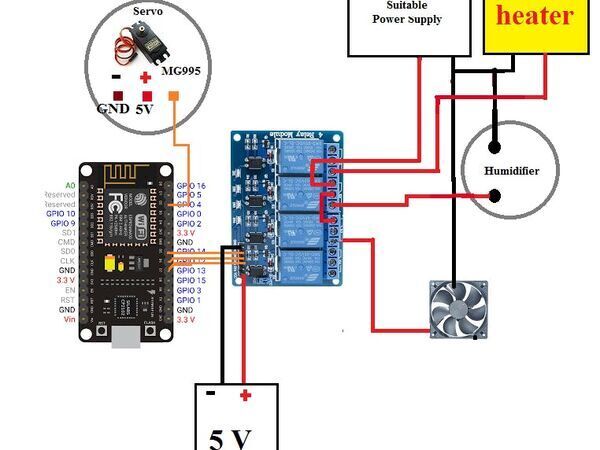
Automatic IoT Eggs Incubator
"Observe automatic eggs incubation from any location. Eggs Incubation is an interesting topic among the arduino enthusiastic. Basically, it is similar to the type of incubator which can be used as a substitute of poultry chicken to incubate the chicken eggs automatically. It will be helpful for the farmers to incubate the eggs automatically without the need of human intervention, by keeping the physical quantities such as temperature and humidity at required level, so that the fetuses inside them will grow and incubates without the presence of mother. Furthermore, egg incubator will not only improve the poultry production considerably but will also help in the regularity of income making, enabling the farmers to be able to get transition into possible rural entrepreneurship. With the help of Remote Control Panel we can monitor and control the incubator processing from remote location, Because of which this IoT incubator can achieve more success in hatching ratio." [...]
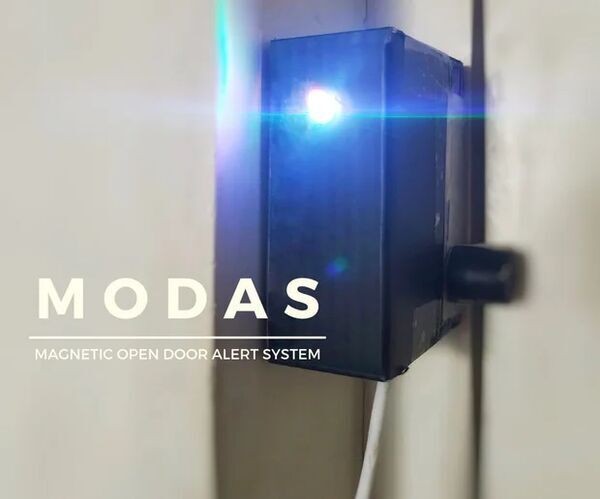
MODAS: Magnetic Open Door Alert System
"Hey fellow DIY'ers. Have you ever found your house door open after returning from a long trip? Me neither. But it is always good to have a safety system in our houses. I'm not talking about the old school projects like a laser trip wire, no no, that's boring. This is something from the future." [...]
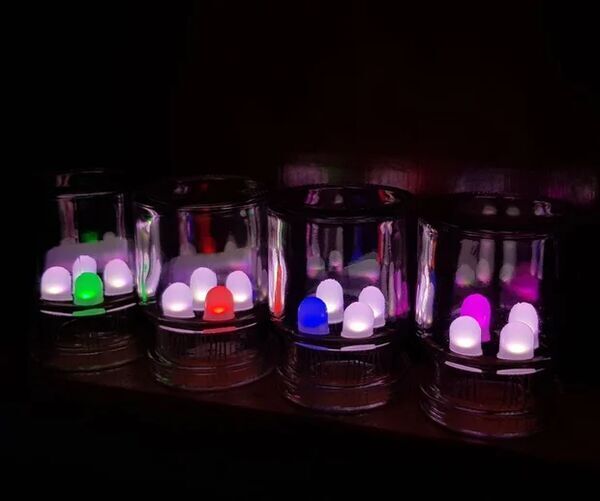
Bottle Binary Clock
"In this Instructable, I'd like to show how to make a simple Bottle Binary Clock. This binary clock can read time information from an NTP server and clock will be updated over WIFI. Time will be shown by RGB LED that are placed inside glass bottles. It looks great, colorful and we can customize the clocks display color. PARTS LIST: 01 x ESP8266 NODEMCU 16 x Common Anode RGB LEDs, 10mm 03 x TPIC6B595N Power Shift Register 03 x A1013 Power NPN Transistors 03 x 1kΩ Resistor 24 x 100Ω Resistor 03 x 0.1uF Electrolytic Capacitor 01 x Single-Side Copper Prototype PCB size A4 01 x Female 40pin 2.54mm Header 01 x Power Supply Adapter 5V/2A 01 x DC Power Jack supply socket 01 meter x Rainbow Color Flat Ribbon Cable 04 x glass bottles Optional for row circuit: 03 x 2N3904 PNP Transistor 03 x TIP42C NPN Transistor 06 x 1kΩ Resistor 03 x 10kΩ Resistor" [...]
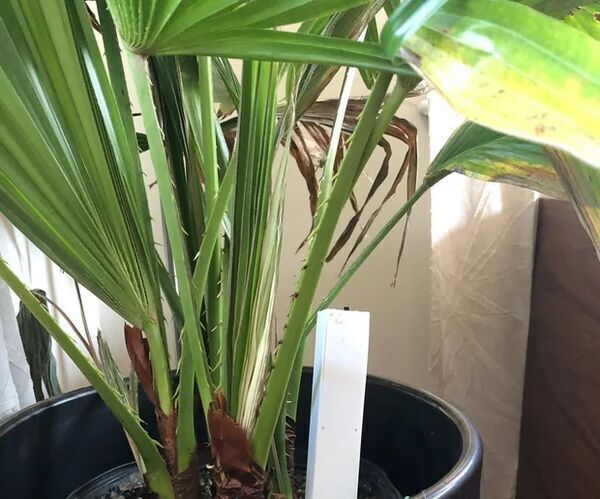
IoT Moisture Sensor
"I wanted a moisture sensor that would let me know when indoor plants needed water. I wanted something I could use for seed starting and for mature indoor plants. I am always concerned that I am either over or under watering them. I have spent a bit of time working on IoT software for Arduino devices, using other people's software I had a pretty good idea of the requirements for mine. I wanted something that I could flash to multiple devices and configure over wifi. I didn't want to have to change a config file each time I uploaded to a new device." [...]
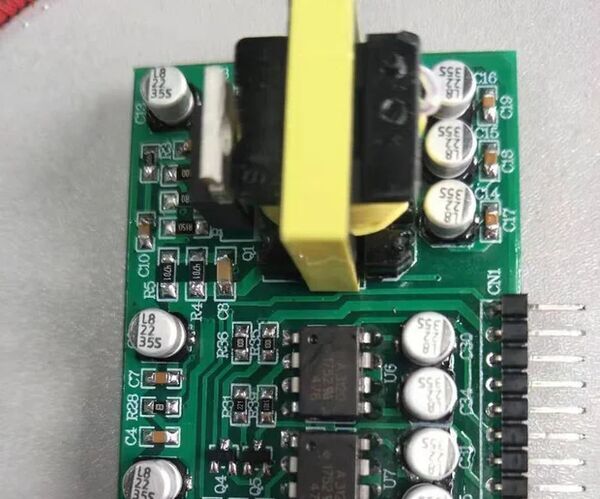
Production of Sine Wave Control Board
"This time it is a single-phase sine wave off-grid control board, followed by a single-phase sine wave off-grid control board, then a three-phase sine wave off-grid control board, and finally a three-phase sine wave off-grid control board. We hope that everyone will support it. All solutions use PIC microcontrollers. Let me talk about my purpose in making a grid-connected inverter. I want to achieve the function of "feedback electronic load". Because aging inverters or aging switching power supplies, everyone uses resistors as loads and wastes power." [...]
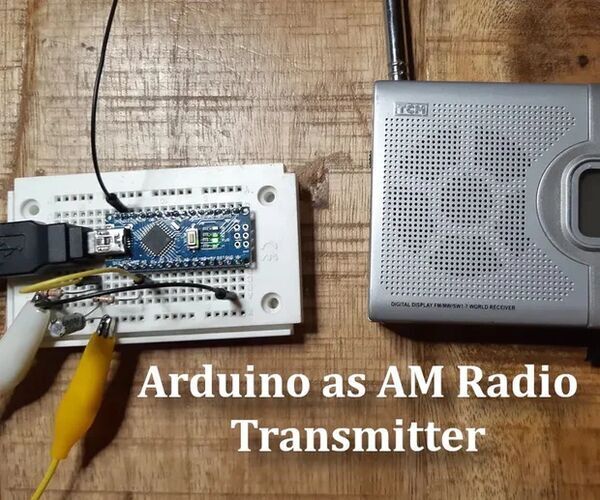
AM Transmitter With Arduino
"Cool things can be done with ATmega MCUs. So I got the idea to build an AM transmitter with an Arduino Nano (Arduino UNO is also possible) The question is, how can amplitude modulation (AM) be achieved on a digital device? AM means that the amplitude of a carrier frequency is changed according to the amplitude of the input signal which we want to transmit. Mathematically spoken, we multiply the carrier with the input signal. But as an ATmega has only digital outputs, it can give only two values: high and low. Frankly spoken, there is no way to get real AM out of an Arduino." [...]
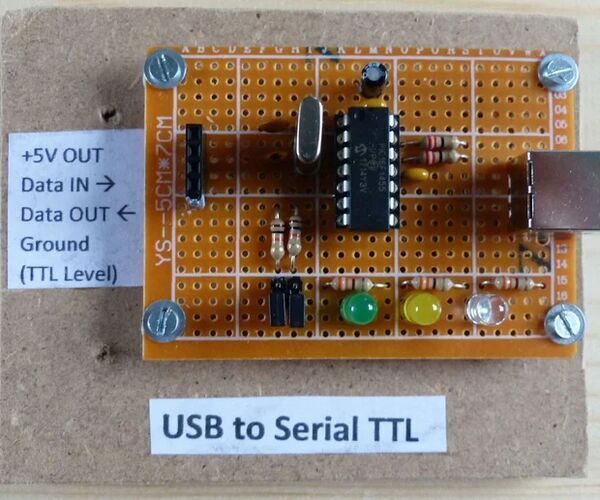
USB to Serial TTL
"For some of my PIC projects I need a serial (RS232) interface to print some messages on the screen of my computer. I still have a desktop computer that has one RS232 interface but nowadays most computers have a USB interface instead. You can buy devices that convert – TTL – RS232 signals to USB for which several projects have already been published on Instructables but I decided to build one myself. The reason for that is that I like building stuff but also that this version does not need a special driver for Windows 10 since it uses a standard Microchip device descriptor which is already supported by Windows 10. Since the requirements for the baudrate may vary I decided to support the following baudrates using jumpers on the board: 9600, 19200, 57600 and 115200. The device always uses 8 bits, 1 stopbit and no parity for its transmission." [...]
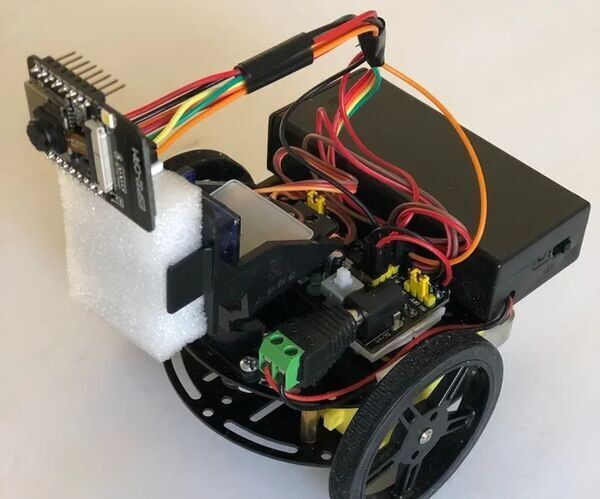
Video Surveillance Robot
"Imagine if you have a robot that has camera on board and can be controlled through the Internet. It would open a lot of opportunities of using it. For example, you could send the robot to the kitchen to check if you accidentally left the kettle on the stove! I have been experimenting using ESP32-CAM development boards and found that with ESP32-CAM it can be done easily. The ESP32-CAM is a very small camera module with the ESP32-S chip that costs approximately $10-$15. The ESP32-CAM module can be programmed with Arduino IDE." [...]
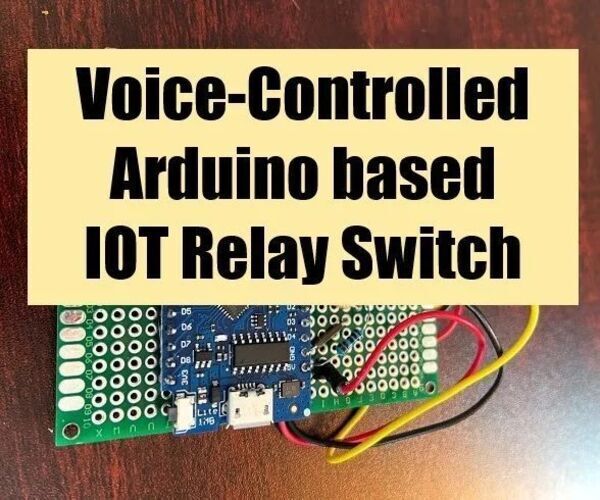
Arduino Based Voice-Controlled IOT Relay Switch (Google Home & Alexa Supported)
"This project describes how to make an Arduino-based, voice-controlled, IOT relay switch. This is a relay that you can turn on and off remotely using an app for iOS and Android, as well as tie it in to IFTTT and control it with your voice using Google Home and/or Alexa as well. We will cover all steps needed to create the device, connect the app, and connect in the various IOT services as well. Supplies: Wemos D1 Mini Lite ESP8285 (a few dollars on Amazon) 5V Relay Module for Arduino/Raspberry Pi 2N2222 NPN transistor 47K ohm resistor 1K ohm resistor" [...]
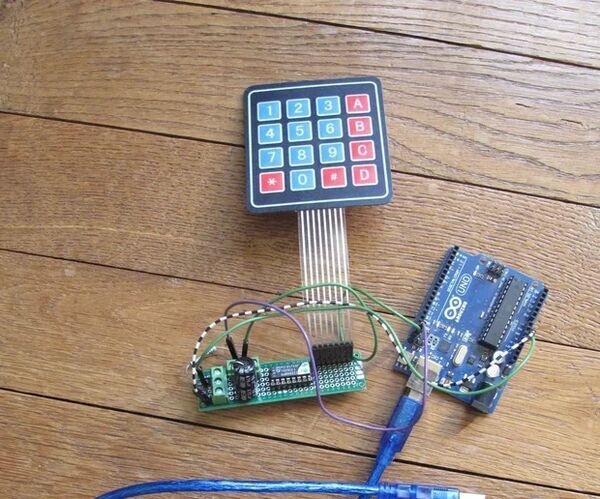
Modern and New and Easier Example of Locker With Arduino Matrix Keypad 4x4
"Another example of using a LCD keypad matrix 4x4 with an I2C circuit. This matrix keypad is made of 16 push buttons and with I2c communication, you just need 2 pins to manage it: SDA (A4 on arduino board) and SCL (A5 on arduino board). I used a PCF8574A 16 DIP I/O I2c circuit the small schematic is given above. The address of this kind of components is 0x3C in my example (A0=0, A1=0, A2=1). " [...]
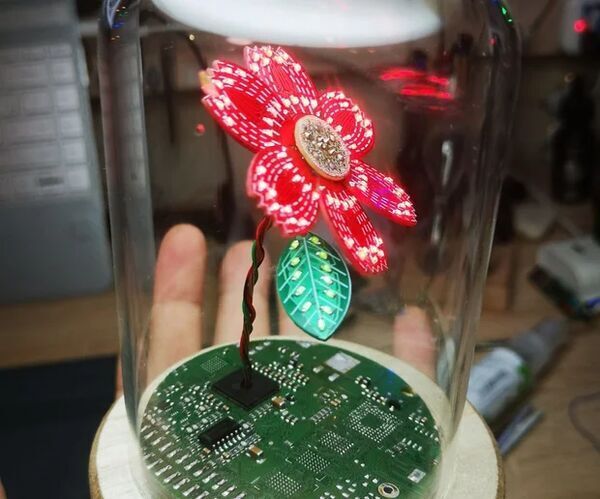
PCB LED Flower
"PCB designing it is my hobby. Usually, I did something for myself only, but some time ago my wife asks me for anything beautiful for her. And soon I designed this flower. It's the first time I use an Attiny processor, and it was just another experiment for me. All flower's petals have his own microcontroller with 12 LED connected in charlieplexing order. And this microcontrollers to be controlled by 1-wire protocol." [...]
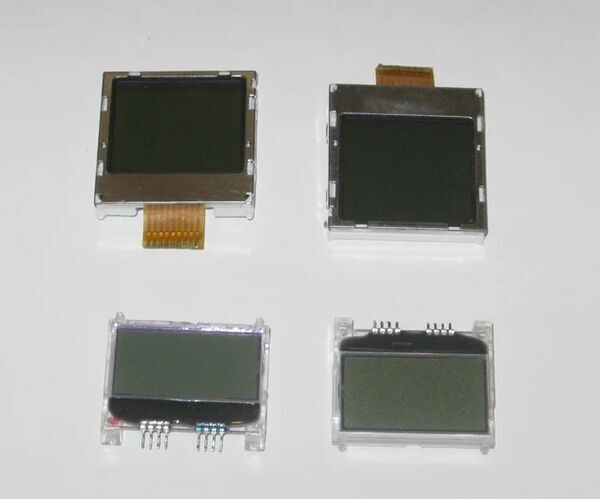
Live Reverse Engineering
"I started in electronics before the advent of the internet and most solid state components, so getting datasheets and schematics was not easy for me. Today with manufactures making custom ICs and LCDs for everything from phones to video games, tinkers that salvage components from old electronics are faced with a new challenge. The schematics and datasheets for custom components are just not available. Even though these components can be obsolete by the time you are salvaging the parts you still can’t get the data sheets. This is where reverse engineering comes to play making schematics and datasheets with pinouts on desired components you can’t get datasheets for. Now I get a lot of electronics out of the waist bin that work, so when you see a component you like don’t just take the component out of the circuit board and expect to find a datasheet for it, sometimes that works and many times it doesn’t." [...]
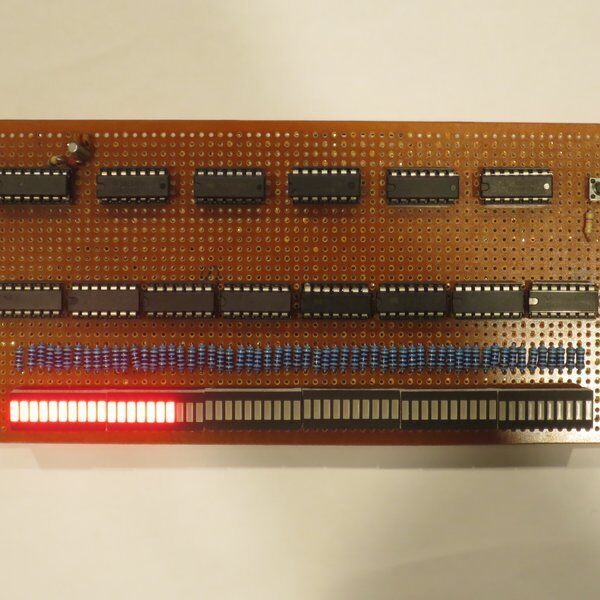
TTL/CMOS Linear LED Clock
"A TTL/CMOS based clock that displays the time along a 60 LED bargraph. I like clocks. I like LEDs. I like mucking around with circuits. I want to make a clock that displays the time along an LED bargraph without using a microcontroller. Only minutes will be displayed - I can always (usually?" [...]
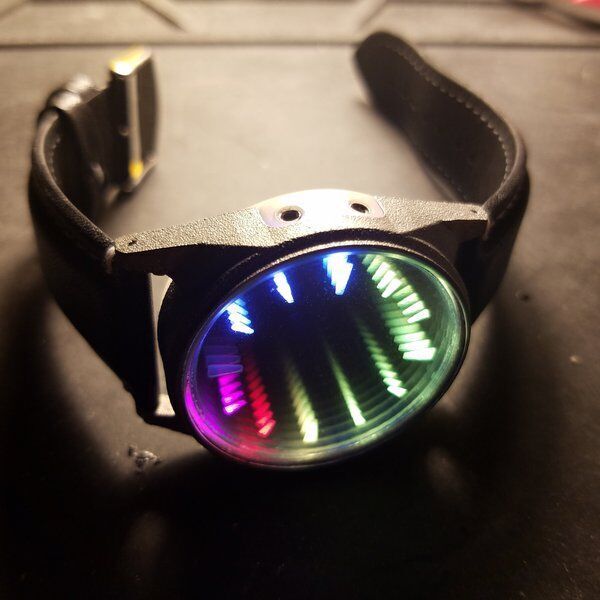
Vortex Watch
"An infinity mirror watch. This watch is a collaboration between myself and Jamal Davis. Our goal was to create a wearable-sized version of the infinity mirror clock projects we had seen around web. The end product is a 3d printed titanium/resin/crystal case with custom electronics and a laser cut/engraved acrylic face to create the illusion. It uses its RGB LEDs to indicate time by assigning hours, minutes, and seconds to Red, Green, and Blue respectively and overlapping these colors of light to create primary, secondary, and tertiary colors that represent the time. The watch can be charged via micro USB and has a built in fuel gauge to keep track of charge." [...]
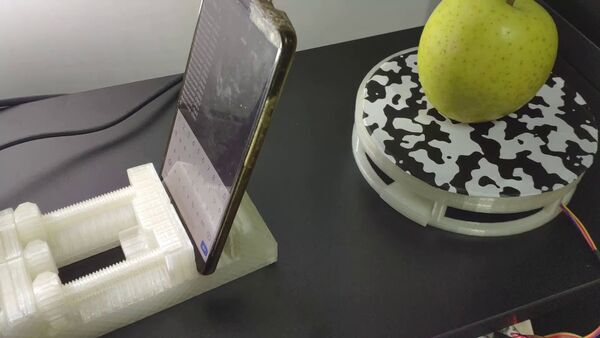
AAScan: Open source, minimalist, fully automated 3D scanner based on Arduino and Android!
"Introduction I’ve designed my own 3D scanner! So, what’s different between this and many other designs on Thingiverse? First, it is minimalist. It only include minimum features that keep it functional. For comparison, check out this beautiful design by daveyclk: https://www.thingiverse.com/thing:1762299 Second, it’s fully automated using the latest technology of Arduino and Android (And Linux if you count the computer). For comparison, this design by Bribro12’s: https://www.thingiverse.com/thing:3723618 is minimalist, but is hand-driven." [...]
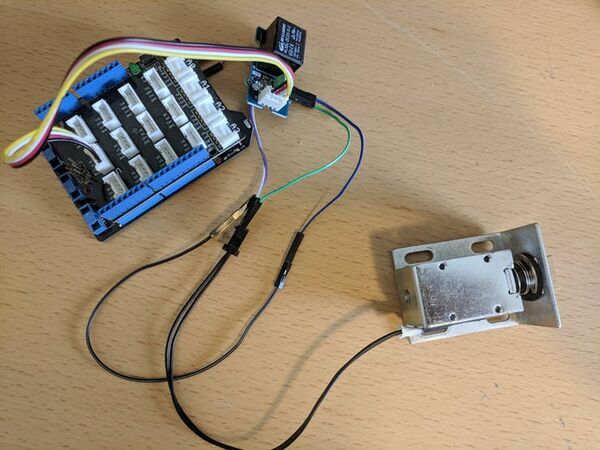
Netduino WiFi Lock
"Unlock your deadbolt remotely through WiFi using Netduino. Keyless Entry and Smart Locks The idea of smart locks has been out for a while, but at the end of the day, people still end up carrying either RFID or just use the lock itself. We pretty much carry our phone all the time now, and by the time we are at the door we are automatically connected to our own WiFi network. By using Netduino 3 WiFi, we can actually implement a true keyless experience, using our phone as the key and unlock the deadbolts through WiFi network. We will need following items: Netduino 3 WiFi Seeed Grove Base Shield Seeed Relay Deadbolt Android phone A box for enclosure" [...]
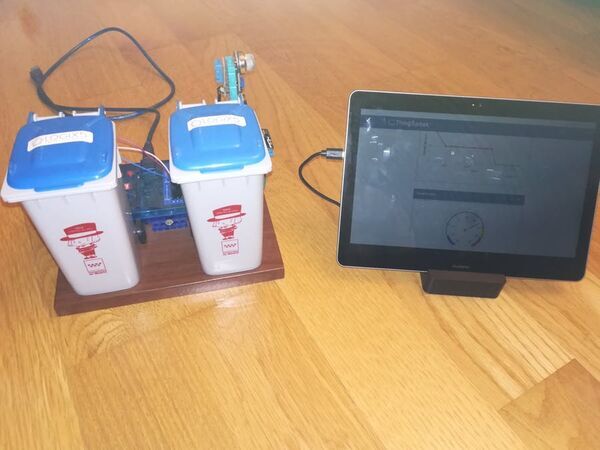
IOT. Intelligent waste management
"IOT. Smart trash cans that remotely warn if they're full, if they smell bad, or if they're being set on fire. Values are sent to ThingSpeak To help city councils or another government institutions my students have created a system that send different information about the public waste bins. This is a prototype. This system send periodically information to ThingSpeak about: Temperature Humidity Level of trash Fire Quality of the air In function of these values actions can be done. For example, if the trash is full or the quality of air is poor would be interesting to send the trash truck to pick the same." [...]
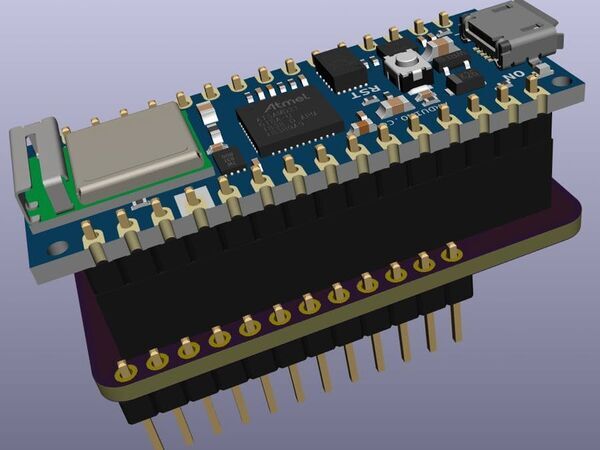
The Shield Puts the Arduino Nano Into a Feather Form Factor
"The Shield is an adapter allowing Arduino Nano form factor microcontrollers to be plugged into Feather form factor sockets. Hello everyone, I have a lot of time not to write anything in Hackster.io, so today I will share how you create the Arduino Nano adapter for the Adafruit Feather form factor. A few months ago, I received a gift from David Cuartielles of Arduino, the MKR1010 and Nano 33 IoT boards, the latter I loved, so I bought the Nano 33 BLE Sense version, playing with them, remember that for the Talent Land 2019 event, I bought an Adafruit TFT screen for use with the Feather boards, and there was born my idea of creating an adapter that allowed the use of the Feather ecosystem with the Arduino Nano boards. " [...]
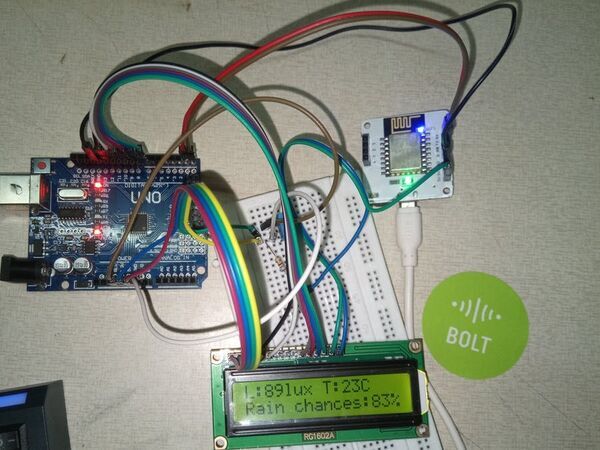
IoT Based Sensor & Climate Monitoring Using BoltIoT Platform
"A system to monitor and display the sensor data and weather forecasts. Often when designing Data acquisition systems, such as plant health monitoring in which case, the sensors are placed on-site, knowing the weather conditions may help in predicting the behaviour of other data and changes in physical requirements, if any. The project involves the design of an IoT based solution to monitor the data obtained from the sensors as well as weather forecasts predicted for a particular region. This could help in connecting multiple sensors to a system and obtaining the data on a central display. The system consists of a transmitter and a receiver section. A device runs the script to control the data being displayed at the end of the receiver sub-system." [...]

wood lathe digital readout
"I bought a wood lathe a few months ago and I thought it would be fun to make my own digital readout. A digital readout is simply an electronic display that shows you the spindle speed of a lathe. I’m not very knowledgeable when it comes to wood lathes, but out of the ones I found not very many had a DRO for the spindle RPM. I started brainstorming different ways to measure the rotation of the spindle and I decided that a hall effect sensor would be the best way to go. A hall effect sensor is really just a device that can measure the presence of a magnetic field. My plan was to place a neodymium magnet on the rotating spindle then use a hall effect sensor to measure that magnetic field every time it passed by." [...]
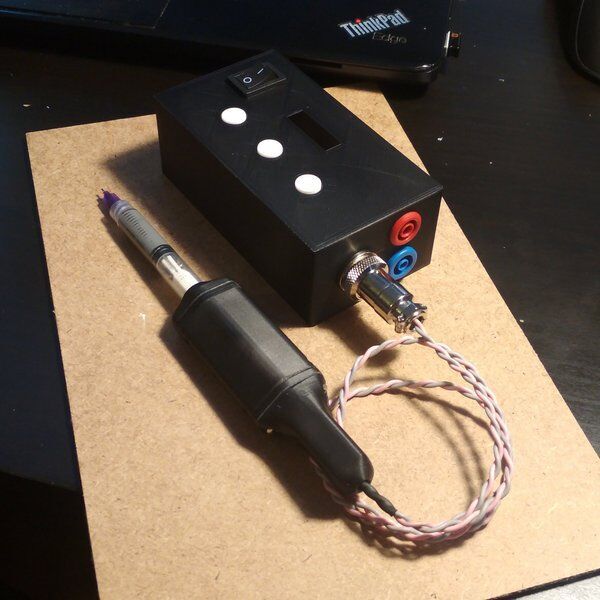
Low cost solder paste dispenser
"Easy to build but very capable and handy DIY solder paste dispenser built mostly from cheap Ebay components and modules. Already finished and nicely working solder paste dispenser. Powered with cheap ebay mini DC motor with gearbox (100RPM) and long M3 shaft secured by two axial bearings also from ebay. Body of both control box and dispenser is fully 3D printed. Accepts standard ebay 3ml luer lock syringes. Firmware supports dispensing speed configuration and also retraction to prevent leaks." [...]
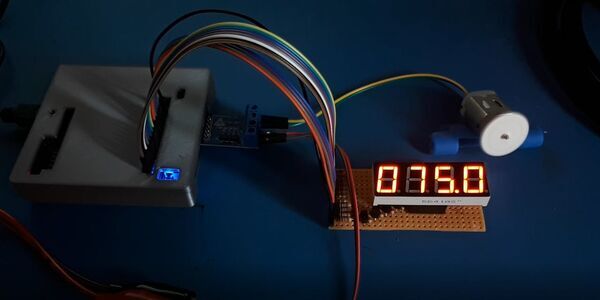
7-Segment LED Display Hardware and VHDL Module for MiniZed
"Actual PWM duty cycle on 7-segment LED display, driven by hardware (PL) and controlled by software (PS). This project was created for the MiniZed Motor Control Build Challenge and the final application was built on the Mini But Mighty project by Adam Taylor. This project is a VHDL reference design for creating a multiplexed 7-segment display hardware driver in programmable logic, and shows how to to use and test HDL hardware modules on small boards (such as MiniZed) without numerous buttons/switches and LEDs. The example presents the implementation of the created VHDL hardware module into Mini But Mighty project for displaying actual PWM duty cycle on 7-segment display. Hardware For the needs of this project, I created a hand made PCB for the 5641AS quad digit 7-segment LED display. The segments line are connected to header through 300 ohms resistors, the common cathodes of each display are driven by 2N7000 N-MOS transistors whose gates are connected to header by 10 k ohm resistors and grounded by 220 k ohm resistors." [...]
That's all Folks!



